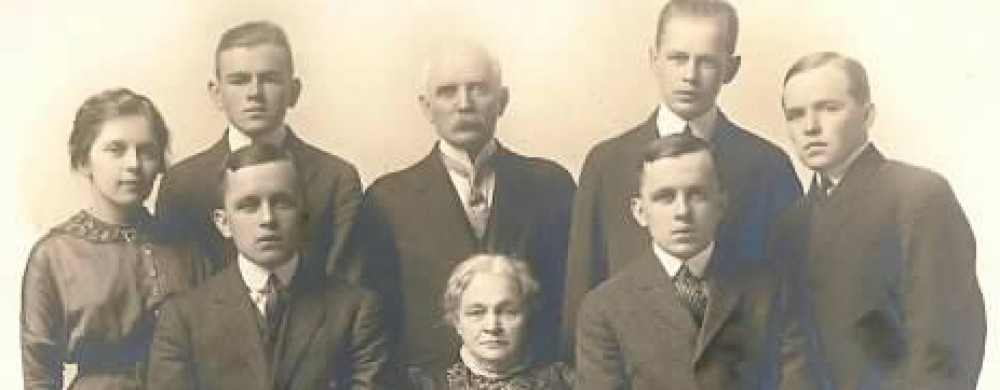Benjamin Franklin Hathaway found his first bride in his hometown. It is tempting to think, having set himself up in the world, he returned to Freetown to claim his childhood sweetheart. However, Ann Maria Bliffins (Bliffens / Blivens) was 20 years old and Benjamin at 26, had been away for about 10 years, making a longstanding romantic relationship doubtful.
Ann’s girlhood
Ann was the youngest child of Anson and Rachel (Read) Bliffins. They married in 1796 and produced sons right away (Anson Sheffied and William Read). Their good fortune was short lived. Over the next eight years, three girls were born, – and died (Rebecca, Mary Ann and Mary).
Rachel gave birth in 1808 to another son, Thomas Valentine. He thrived. Rachel likely reconciled herself with the belief daughters weren’t part of the Lord’s plan for her. Six years passed. In May 1814, as all sorts of tender things sprang to life, Ann was born.
The baby would have been a source of worry with every tiny sniffle, and later, with every bump suffered in a tumble. Anson and Rachel’s memories of little girls lost would never have been far from mind. Yet, Ann passed all the danger marks. It’s natural to suppose an unexpected,and only daughter would be doted on by older parents, but I have reservations.
Ann’s eldest brother, Anson, was a generation older and out of the house. Mere days before Ann’s first birthday (1815), her next brother, William (17 years), went off to sea. (This was not at all unusual in Southeastern Massachusetts when most men became either farmers or seamen.)
In 1822, when she was just seven years old, Thomas, the brother she would have toddled around the house after, obtained his Seaman’s Certificate in Newport, RI, – a week before he officially turned 13. This is surprising for a boy with two living parents, and the only son at home. (1) Little Ann likely wept bitter tears at his departure, and, perhaps, for years afterward. She had suddenly become an only child, and she may have felt very lonely.
It was common for an unmarried daughter to care for her aging parents until they died. As a young woman, Ann certainly engaged in cooking and cleaning, laundering clothes and linens, keeping fires going, and acting nurse when her mother or father were sick. Ann knew what the future held for her as she neared adulthood. Her decision to marry tells us she wanted more in life.
However it was exactly that Ann and Benjamin found each other, these Hathaway and Bliffins families were certainly acquainted in that small rural community. The betrothed couple professed their marriage vows in Freetown on Sunday, August 27, 1834.
Married life in New Bedford
There is every reason to believe Benjamin was an attentive husband, but the couple remained childless for six years. At last, the birth of Sarah M. Hathaway (2), on September 21, 1840, was recorded in New Bedford. That healthy little girl (3) must have brought great joy to the couple.
In 1843, another girl was born, named Ann (Anna) Franklin. The little one died of “brain fever” before her second birthday in summer of 1845. Ann became pregnant soon after, and another girl, named Ann Franklin, was born the last day of June 1846, but died at four days, of a “diseased heart.” Ann gave birth in November 1847 to yet another Ann Franklin. The parents may have dared to hope with her, but she died, at nine months, of cholera.
Having buried a third daughter in August 1848, weathered pregnancies, births, sicknesses, and seeming unrelenting grief, Ann herself fell ill. One month later, September 1848, Ann Maria (Bliffins) Hathaway was 34 years and four months. (4) Three days before her passing, Ann and Benjamin marked their 14th wedding anniversary.

Ann Maria (Bliffens) Hathaway, Oak Grove Cemetery, New Bedford, MA [Credit: Find A Grave contributor, goose, 2015.]
Then, as today, goodhearted family, friends, and neighbors would have done what they could to help, but that couldn’t be counted on as a permanent solution.
Next time: More wives and more children
Notes:
(1) Thomas Valentine Bliffins’s (1808-1886) compelling reason for leaving remains unknown. He proved well-suited for life abroad, as he became a Master Mariner and ship captain. He lived in San Francisco, CA for decades and appears, to have never married.
(2) Benjamin and Ann’s daughter, Sarah, may well have been named for Benjamin’s older unmarried sister (Sarah “Sally” Hathaway, 1797-1866). Sarah lived in to manage her brother’s household, at least, once (1855).
(3) Sarah M. Hathaway (1840-1925) married Frederick A. Mickell, buried him and passed away, just a month short of her 85th birthday.
(4) In modern medicine, jaundice (yellowing of the eyes and / or skin) is a symptom, not a cause of death. Ann probably died of liver failure, which resulting from an underlying cause.
Sources and References:
- Ancestry.com. Massachusetts, Town and Vital Records, 1620-1988; Freetown and New Bedford.
- Ancestry.com. NARA, United States Federal Census,1810, 1820, 1830, 1840, 1850, 1860, 1870,1880.
- Ancestry.com. Massachusetts State Census, 1855 and 1865.
- Ancestry.com.US City Directories, New Bedford, MA 1830-1890.
- Jaundice – National Library of Medicine – PubMed Health
http://www.ncbi.nlm.nih.gov/pubmedhealth/PMH0001259 -
http://www.huffingtonpost.ca/2017/01/27/multitasking–women–men



